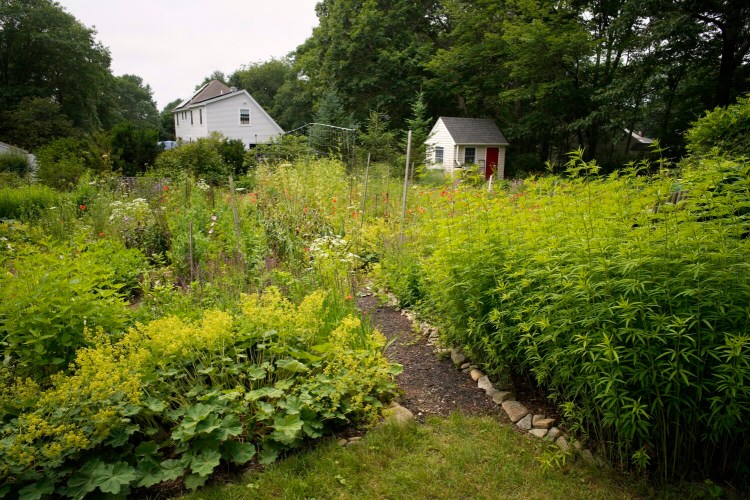My gardening methods have changed since 1975, when I first picked up trowel and spade at the house where my wife Nancy and I still live. We’ve learned a lot in what is now almost a half a century, and we also have become more aware of the consequences of our actions. It’s the new year, a time when people reflect on the past, ponder the future and make promises to improve their life choices. Had I known in 1975 as much as I know now, I would have done things differently.
The first thing we ever planted at our Cape Elizabeth home was a Kentucky bluegrass lawn on top of commercially purchased topsoil. While it did eventually produce an excellent lawn, I remember a friend of our then preschool son sinking knee deep in mud during the spring of 1976, before the lawn had fully established itself. We contracted with a local one-man company to do a weed-and-feed regimen on the lawn until 1988. That’s when the applicator’s wife forced him to quit, worried about what all the chemicals were doing to his health, and he sold out to a national chain. We never signed up with the chain, though we did continue to regularly fertilize without the weed killer.
In those days, I never added organic matter to our vegetable garden. We planted what we wanted and fertilized with granular fertilizer, following the instructions on the fertilizer bag. At first, I used a Cub Cadet tractor to till the garden into plantable rows. The production was pretty good.
Nancy had learned a lot about gardening when she was growing up. She built on that by taking garden club classes on more exotic plants, design principles and growing methods. She passed that information on to me, and together we created an attractive yard that included a productive vegetable garden.
We used a lot of insecticides, especially on the hybrid tea roses we then grew and on beetles that attacked our potatoes and raspberries.
When we bought shrubs and perennials, we paid no attention to whether or not they were natives. Our first purchases were six lilacs, two yews, two potentillas and two viburnums. The only native among them was an American cranberry viburnum, which died shortly after the viburnum leaf beetle arrived in Maine in 1994.
By that time, though, our garden practices were changing. To begin with, we were making an effort to reduce our pesticide use. Also, I’d given up tilling our vegetable garden each spring, as I’d come to understand tilling disrupted the soil structure. Now, I use my U-bar to loosen the soil, and in July, I begin putting down our composted leaves, or leaf mold, on the paths in the vegetable garden. And, no, it doesn’t make our soil too acidic.
This rambling introduction is leading me to tell you how grateful I am to be writing this column every week. When the Portland Press Herald decided to resume its gardening column in 2004 after going several years without one, the then-features editor asked at least two other people to write the column before getting to me. At that time, I was an editor in the features department.
I intended to say no because I didn’t think I was qualified. Most garden writers have studied horticulture or botany and know the science of growing things. I studied journalism and took a lot of literature courses. But before I had a chance to turn her down, the editor advised me to try a different approach. Before I was an editor, I’d been a reporter, someone whose job it is to ask questions and to, metaphorically, dig. She said I’d be a reporter again, but my beat would be gardening.
Smart! In the almost 19 years I have been writing this column, I have learned a lot by attending courses, reading gardening materials and interviewing bright people in the horticulture and agriculture industries. Both the column and my gardening have benefited.
Getting back to our own garden and our over-use of chemicals at the start. I am convinced we did little harm, partly by luck. Over the years, we have gotten rid of the invasive plants, such as the burning bush and barberry that we planted, and also removed the multiflora rose, honeysuckle and bittersweet that were here when we moved in. We built our house on the part of the property that was pasture, and we left standing the wooded area of native oaks, maples and, arriving later, cherries with an understory of brambles and native wildflowers.
The property always seems to have a good supply of squirrels, chipmunks, birds, butterflies and bumblebees. They have forgiven us our mistakes.
Tom Atwell is a freelance writer gardening in Cape Elizabeth. He can be contacted at: tomatwell@me.com.
Send questions/comments to the editors.



Comments are no longer available on this story